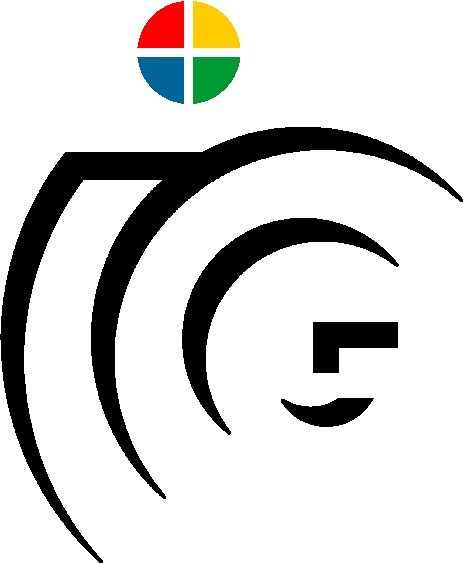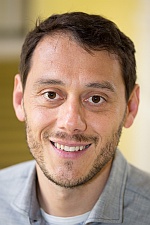

Darko Štern was a post doc at the Institute for Computer Graphics and Vision at Graz University of Technology, funded by the EU Marie Curie project YOUTH. Currently he is a post doc at the Ludwig Boltzmann Institute for Computer Graphics and Vision, where he is funded from the FWF project FAME.



Segmenting and tracking cell instances with cosine embeddings and recurrent hourglass networks
Differently to semantic segmentation, instance segmentation assigns unique labels to each individual instance of the same object class. In this work, we propose a novel recurrent fully convolutional network architecture for tracking such instance segmentations over time, which is highly relevant, e.g., in biomedical applications involving cell growth and migration. Our network architecture incorporates convolutional gated recurrent units (ConvGRU) into a stacked hourglass network to utilize temporal information, e.g., from microscopy videos. Moreover, we train our network with a novel embedding loss based on cosine similarities, such that the network predicts unique embeddings for every instance throughout videos, even in the presence of dynamic structural changes due to mitosis of cells.
Payer C, Stern D, Bischof H, Urschler M: Published in Medical Image Analysis 57:106-119, 2019. DOI (open access)

Integrating spatial configuration into heatmap regression based CNNs for landmark localization
In many medical image analysis applications, only a limited amount of training data is available due to the costs of image acquisition and the large manual annotation effort required from experts. Training recent state-of-the-art machine learning methods like convolutional neural networks (CNNs) from small datasets is a challenging task. In this work on anatomical landmark localization, we propose a CNN architecture that learns to split the localization task into two simpler sub-problems, reducing the overall need for large training datasets. Our fully convolutional SpatialConfiguration-Net (SCN) learns this simplification due to multiplying the heatmap predictions of its two components and by training the network in an end-to-end manner.
Payer C, Stern D, Bischof H, Urschler M: Published in Medical Image Analysis 54:207-219, 2019. DOI (open access)
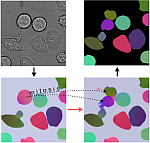
Instance Segmentation and Tracking with Cosine Embeddings and Recurrent Hourglass Networks
Different to semantic segmentation, instance segmentation assigns unique labels to each individual instance of the same class. In this work, we propose a novel recurrent fully convolutional network architecture for tracking such instance segmentations over time. The network architecture incorporates convolutional gated recurrent units (ConvGRU) into a stacked hourglass network to utilize temporal video information. Furthermore, we train the network with a novel embedding loss based on cosine similarities, such that the network predicts unique embeddings for every instance throughout videos.
Payer C, Stern D, Neff T, Bischof H, Urschler M: Presented as a talk at International Conference on Medical Image Computing and Computer Assisted Intervention (MICCAI 2018), Granada, Spain, 2018. Arxiv, DOI
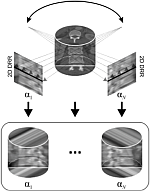
Sparse-View CT Reconstruction Using Wasserstein GANs
We propose a 2D computed tomography (CT) slice image reconstruction method from a limited number of projection images using Wasserstein generative adversarial networks (wGAN). Our wGAN optimizes the 2D CT image reconstruction by utilizing an adversarial loss to improve the perceived image quality as well as an L1 content loss to enforce structural similarity to the target image. We evaluate our wGANs using different weight factors between the two loss functions and compare to a convolutional neural network (CNN) optimized on L1 and the Filtered Backprojection (FBP) method.
Thaler F, Hammernik K, Payer C, Urschler M, Stern D: Presented at MICCAI Workshop MLMIR 2018, Granada, Spain, 2018. DOI





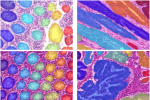


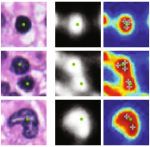


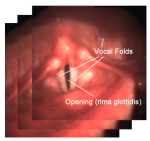
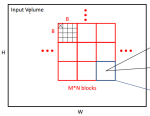

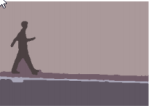
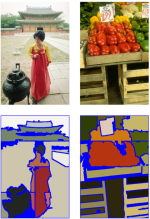
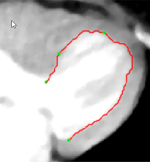

- Back to Projects Overview
- Back to Group Overview
- Back to Team Bischof
